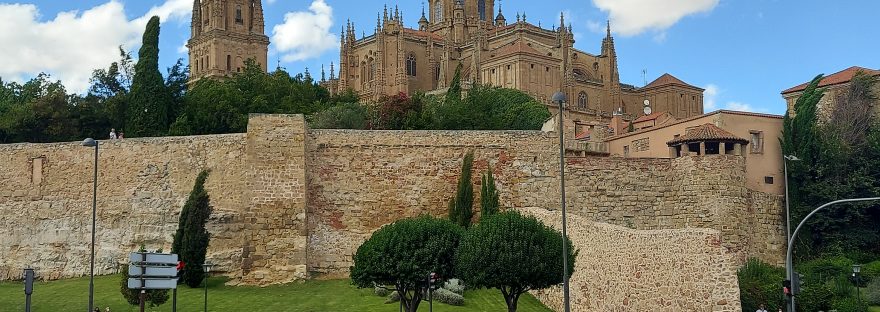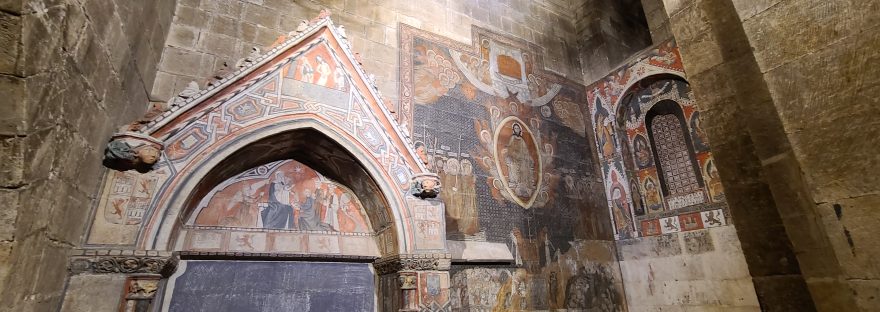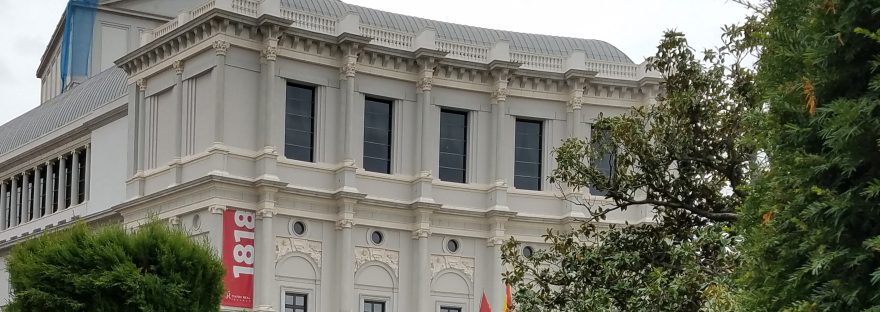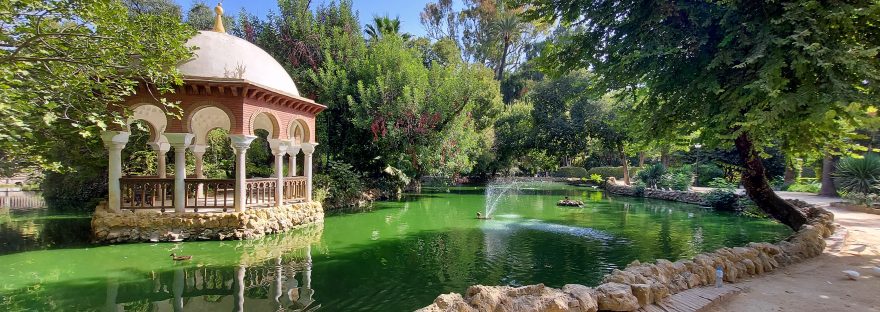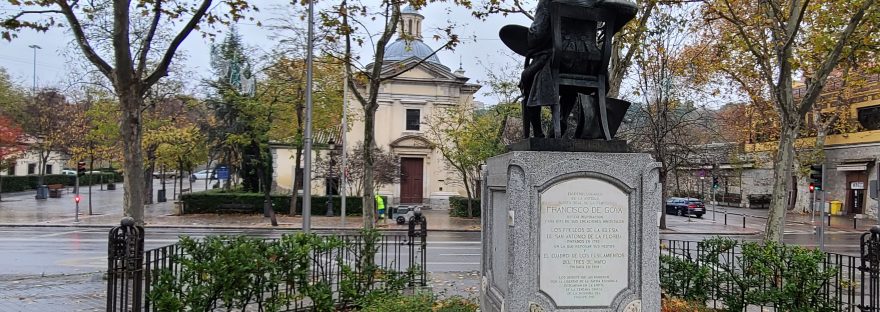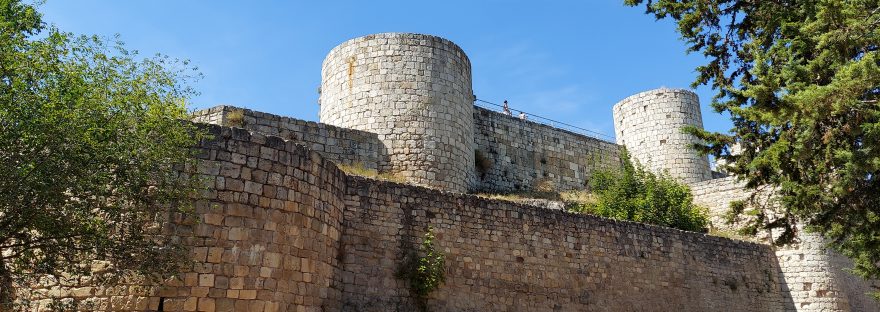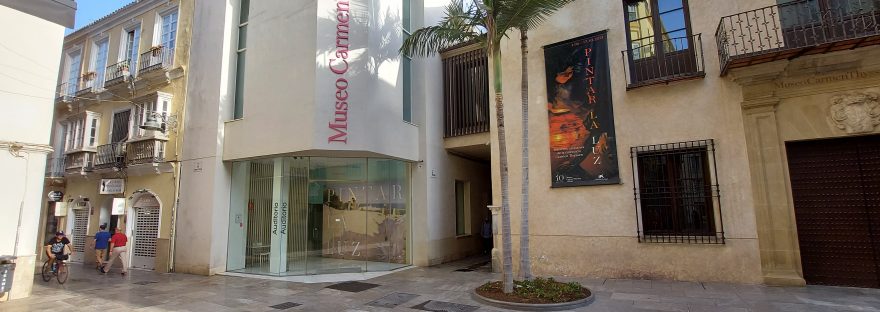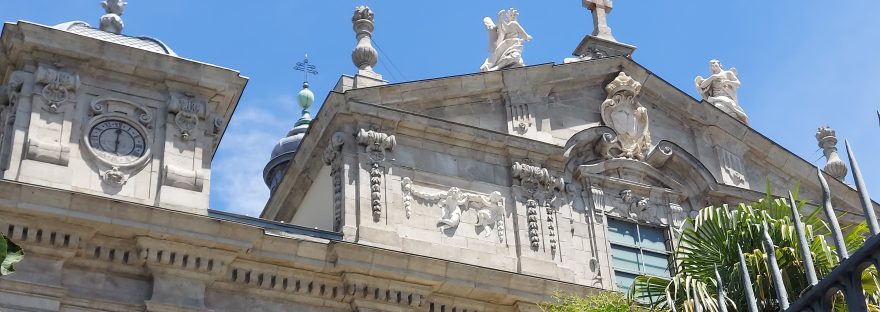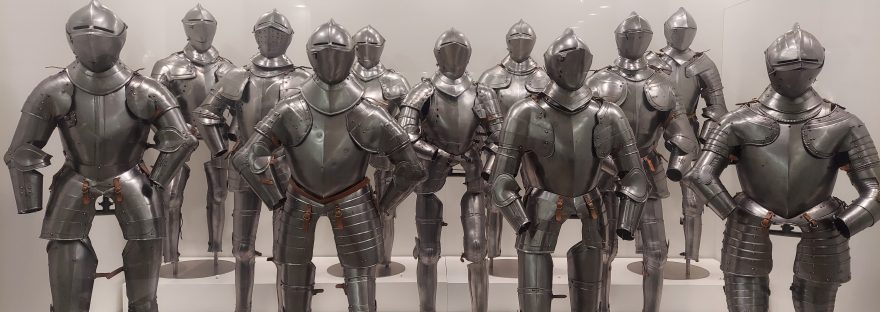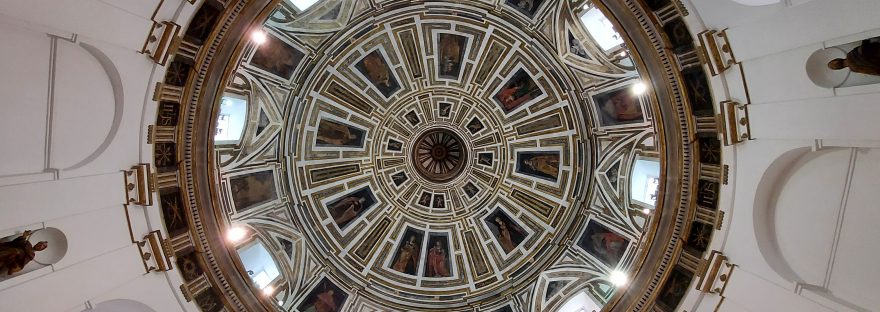In 1491, the Cabildo of Salamanca proposed the need for a temple of larger dimensions, since the Old Cathedral, Romanesque, was small and dark for the time, given the population development that was taking place at that time. The master builders of the cathedrals of Toledo and Seville were hired, with the mission to build a new cathedral for Salamanca, laying the first stone on May 12, 1513. We had commented in the previous article dedicated to the Old Cathedral, that when we observe the structure it gives the impression that it is only one cathedral and not two. This was achieved by supporting the New Cathedral on the north wall of the Old Cathedral. The wall was reinforced towards the interior of the old temple, leaving the lateral nave partially reduced with the new construction. The tower of the new cathedral was built over the bell tower of the Old Cathedral. Continue reading “The New Cathedral of Salamanca”
Tag: Spain
Old Cathedral of Salamanca
Six cities in Spain have two cathedrals and Salamanca is one of them. Some of these are built separately and others, as in the case of the cathedrals of Salamanca, may be united. The reality is that, for nearly four hundred years, the Old Cathedral and the New Cathedral have lived together as one. And, although they may appear to be a single structure, the truth is that each has its own separate history and so we will treat them as such. For obvious reasons, it is with the Old Cathedral of Salamanca that we begin the first part of this article. Continue reading “Old Cathedral of Salamanca”
Royal Theater of Madrid
When making your way to take the Metro Opera Station in Madrid’s Isabel II Square, or strolling through the gardens of the Plaza of the Orient, there is one building that stands out very elegantly, it is the Royal Theater. It is the first institution for the performing arts in Spain, the National opera house and considered one of the main opera coliseums internationally. Its program ranges from its renowned opera productions, ballet, dance, flamenco, concerts, to entertainment and shows for the whole family. Continue reading “Royal Theater of Madrid”
Maria Luisa Park, Seville
The first urban park of Seville is the Infanta Maria Luisa Fernanda Park, better known as Maria Luisa Park. It is a wonderful area, where tranquility and calmness are breathed in an extension of 34 hectares. It was declared in 1983 as an Asset of Cultural Interest in the category of Historical Garden. Continue reading “Maria Luisa Park, Seville”
Hermitage of “San Antonio de la Florida”, Madrid
Arriving at #5 of the “San Antonio de la Florida” Roundabout on the banks of the Manzanares River in Madrid, you look straight ahead and find not one, but two identical hermitages. Now, it is the so-called San Antonio de la Florida hermitage on the right side of the square, the reason for arriving there. It is the only one, of three hermitages, dedicated to San Antonio de Padua that has survived of those that existed on the outskirts of Madrid. It is known as the hermitage of “San Antonio de la Florida” because it is located on the “Paseo de la Florida”, where formerly stood the Palace of Florida, acquired by Charles IV. Today, there are no remains of this palace as it was demolished in the 19th century to enable the construction of the new “Estación del Norte” (now the Príncipe Pío Railroad Station). Continue reading “Hermitage of “San Antonio de la Florida”, Madrid”
The Castle of Burgos
At the top of the hill of the Castle, serving as a strategic location and with a very broad visual domain of the valley of the Arlanzón river, we find in the Spanish city of Burgos, precisely its Castle. Continue reading “The Castle of Burgos”
The Carmen Thyssen Museum of Málaga
In our visit to the city of Malaga, we could not miss out on the main museum of this Spanish city, the Carmen Thyssen Museum. Opened in 2011, this museum brings together one of the most important collections of Spanish and Andalusian painting from the early nineteenth century to the beginnings of modern times in the twentieth century. Its collection covers some of the main genres of Spanish art in this period, such as landscape and customs, paying special attention to Andalusian paintings. Continue reading “The Carmen Thyssen Museum of Málaga”
Santa Barbara Church, Madrid
The church of which we are going to share with you a bit of its history, we had already had our eye on it on a previous visit to Madrid. It was not open on that occasion, so we put it on the list of places to visit on our next visit. This time, we had the opportunity to enter and were delighted with its architecture that projects a lot of elegance. Continue reading “Santa Barbara Church, Madrid”
The Military Museum of the Alcazar of Toledo

The Alcazar of Toledo houses since 2009, the Military Museum, being the result of the merger of several Military Museums created throughout the nineteenth and early twentieth centuries. It is attached to the Spanish Ministry of Defense. Continue reading “The Military Museum of the Alcazar of Toledo”
“Santo Cristo de la Salud” Church of Malaga
On our way to visit the Carmen Thyssen Museum in Malaga (Spain), next to it, we found a church barely noticeable given its location on “Compañía” Street, which is very narrow and it becomes somewhat difficult to observe the facade, which, although it was a simple one, had some architectural details. Continue reading ““Santo Cristo de la Salud” Church of Malaga”

